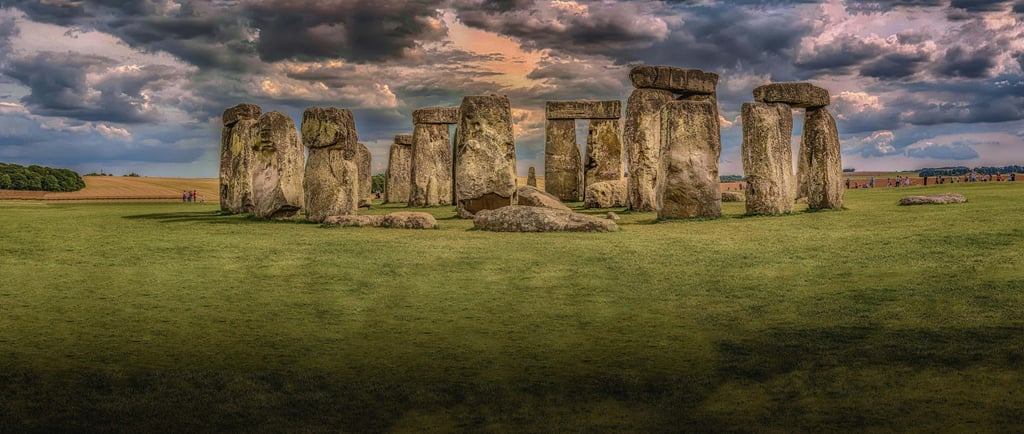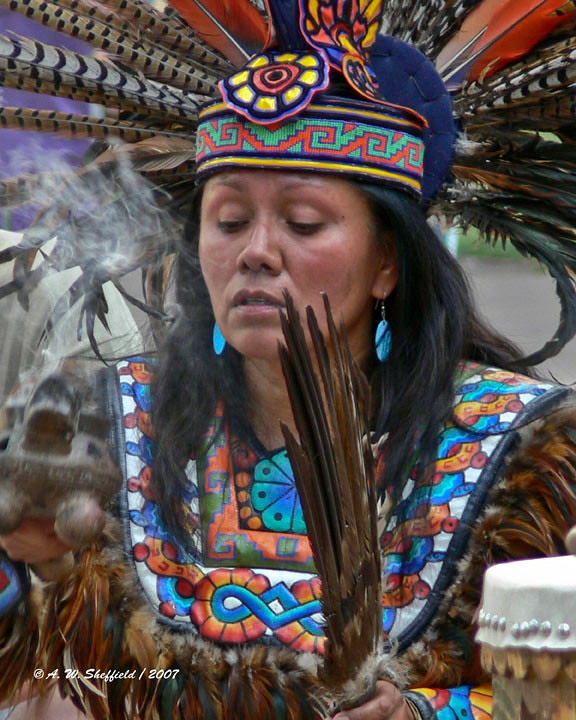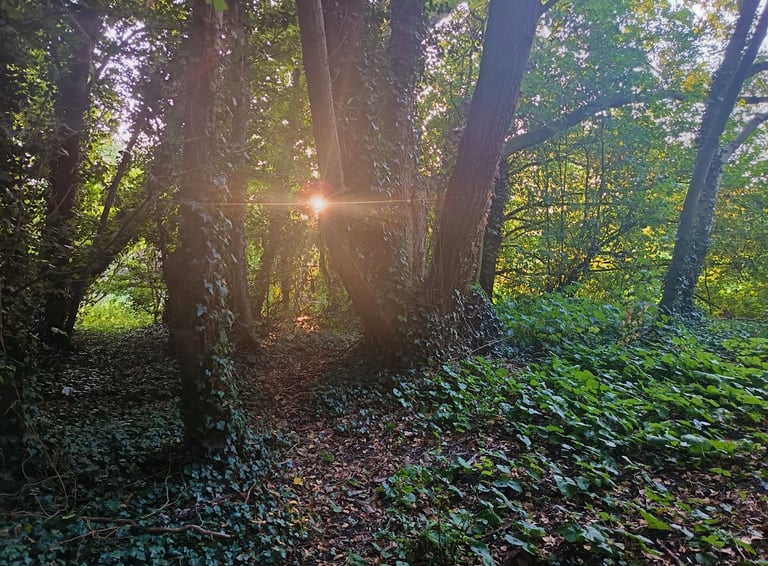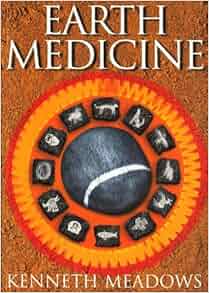
About Shamanism: Ancient Origins
What is shamanism and where does the word come from? What history can teach us, and the UK revival in shamanism. The differences between a shamanic practitioner and a shaman, and how Western culture has lost its shamanic roots.


Origins and meaning in Western culture
There are conflicting viewpoints on the differences between a shamanic practitioner and a shaman. One that most can probably agree on is this definition from the Center for Shamanic Education and Exchange, which says:
A Shamanic Practitioner is someone who acts as a bridge between the shamanic indigenous world and the modern world and borrows the medicine and wisdom of these shamanic people to bring healing and balance.
A shaman is frequently also a shamanic practitioner, but a shamanic practitioner is not necessarily a shaman. There is no universal agreement or rule book on when or if ever a shamanic practitioner earns the title of shaman. Some say it’s given to the practitioner by the community who experiences healing from them and recognise their skills and spiritual gifts.
Indigenous knowledge by other names
Most shamans do not use that term at all. They live in remote areas and have spent years apprenticing with a traditional master from their culture. In the UK, it’s hard to find an authentic native shaman because the indigenous knowledge of our ancestors has been forced underground, lost or submerged into Christianity. Our heritage has been relegated to folklore. Our original shamanic masters would have been druids, seers, witches, Norse Vikings who built settlements in Shetland, Orkney, the Outer Hebrides, northern Scotland, Southwest Ireland, Southern and Eastern England, as well as Iceland and parts of France and Italy in the period known as the ‘Viking Age’ from roughly 793 to 1050 CE. The thirteenth century Welsh poet Thomas Ap Einion records Celtic tales about heroes who travel into Otherworlds in quest of magical prizes, knowledge or power, with which to bring healing to the land (Ingold, C. Druidry.org). Yet, concepts around Celtic shamanism are still hotly debated.
Stonehenge under nimbus clouds


The word ‘shamanism’ originates from the Evenki peoples of Siberia and translates as ‘one who knows’ or ‘one who sees’, although the practice doesn’t belong to any specific culture. Cave paintings show evidence of shamanistic practices originating from 30,000 years ago.
Shamans, also known as ‘medicine men and women’ in some parts of the world, in Central and South America, as ‘curanderos or curanderas’, can alter their consciousness to communicate with the spirit realms.
They understand natural and cosmic laws in the seen and unseen levels of existence; sometimes referred to as walkers between the worlds, or psychopomps, for their ability to guide the souls of the dead in the afterlife.
Since it entered the English language centuries ago, shamanism has evolved in its meaning and is now widely used to describe a type of ancient indigenous spiritual practice still alive in communities across the globe.
Photo by Allen Sheffield. Shaman performing a cleansing ceremony - Indian Market - Santa Fe, New Mexico 2007
We were all animists once
Shamanism is as old as our most ancient ancestors who experienced everything as alive and sacred; from rivers, trees and mountains to the humblest creature. Our hunter-gatherer forebears were ‘animistic’; that is, they felt a strong spiritual connection to nature as conscious and had an awareness that helped them live in a healthy relationship with all aspects of it.
Western civilisation’s gradual disconnect harks back to centuries old religious oppression of people living according to the old nature-based traditions, and the dawning of the Age of Enlightenment in the 17th century, a science-driven, empirical, and ‘logical’ understanding of the world.


Our celebrity entertainment driven mass media culture purports that fame and wealth are the highest ideals. Celebrities are worshipped and emulated like gods and goddesses, Our reliance on digital devices for relating has diverted millions away from spiritual connection not only to nature, but to themselves, because humans are also nature! The resulting symptoms of dis-ease, imbalance, illness and deep trauma are staring us in the face. In England, 604,861 adults with a severe mental illness were accessing support from community mental health services at the end of April 2024 (The Big Mental Health Report, Mind 2024). Almost 9 million Brits are dependent on antidepressants, with prescriptions soaring to record levels since the Covid pandemic.
The gnawing internal void and struggle to manage complex emotions (for some at least) is driving increasing numbers of Brits towards eclectic spirituality, a highly individualised spiritual belief system composed of selected elements drawn from various doctrines (Sigdel, J. 2016). It is in this fertile space that a renaissance in shamanism is flourishing. According to the most recent census for England and Wales, shamanism is expanding faster than any other belief system, with its numbers growing from 650 in 2011 to 8,000 in 2021 (James, N. 2024 Prospect Magazine).


Core Shamanism
The shamanic revival can be partly attributed to the work of American anthropologist Michael Harner, who brought shamanism to the West after extensive field and cross-cultural investigation, experimentation, and personal practice. His 1980 book, The Way of the Shaman: a Guide to Power and Healing introduced the idea of core shamanism, consisting of the core principles of shamanic practice, the ‘universal, near-universal, and common features of shamanism, together with journeys to other worlds, a distinguishing feature of shamanism (Foundation of Shamanic Studies).
“A shaman is a man or woman who enters an altered state of consciousness – at will- to contact or utilize an ordinarily hidden reality in order to acquire knowledge, power, and to help other persons."
– Michael Harner
The term ‘shamanics’ was introduced by the late Kenneth Meadows, a British college lecturer, journalist and internationally respected author of several books on the application of shamanic principles to personal development and empowerment.
Meadows studied shamanic teachings directly under Native American, British, Scandinavian and other European shamans, and created a contemporary discipline called ‘core shamanics’. The term constitutes core shamanic knowledge, an amalgamation of the core practices and principles of shamanism from the various tribal communities he studied and worked with.
Shamanism – ushering in a brighter future
The shamanic principles of love and harmony, spirit connection, respect for all living things and methods of healing trauma, could help create a happier, healthier, more attuned and safe society. Peace and love could overcome violence and aggression, community bonds could strengthen, and no one need ever feel alone again.
The resurgence of interest in shamanism and the old traditions of northern European magic and Wicca, a New Age movement, are helping to usher in the New Earth prophesied by the Hopi and other tribes. This is where we are now. The work of Harner and Meadows, along with other luminaries in Western shamanism, such as Sandra Ingerman and Caitlin Matthews, is empowering the prophesied Warriors of the Rainbow to bring back the knowledge and wisdom urgently needed in 2025!

In this video, indigenous leaders from South, Central, and North America share the Prophecy of the Eagle and Condor as seen in the award winning film Shift of the Ages. The Shift of the Ages film shares the story of Wandering Wolf, Grand Elder of the Maya Nation, and his mission to see peace, health and environmental harmony come about in the world.
Further reading
FRANCIS, P. 2017. The Shamanic Journey: A Practical Guide to Therapeutic Shamanism - The Therapeutic Shamanism Series 1. Published by Paul Francis.
JOHNSON-BELl, L. 2023. North European Paganism. Wooden Books Ltd. First Edition.
HARNER. M. 1990. The Way of the Shaman. Harper Collins.
MEADOWS, K. 2001. Earth Medicine. Ebury Press, Random House. Third Edition.
MEADOWS, K. 1990. The Medicine Way – A Shamanic Path to Self-Mastery. Element Books.
What is a Shamanic Practitioner? Society for Shamanic Practice
How Shamanism became England’s fastest-growing religion. Prospect Magazine
What is a shamanic practitioner? The Shamanic Center for Shamanic Education and Exchange, by John Flynn
Shamanism in the Celtic World, by Corby Ingold
Shamanism Emerges as the Fastest-Growing Spiritual Movement. Embracing Shamanism
What the heck is Eclectic Spirituality? November 28, 2016 by Judie Sigdel
Core Shamanism – The Foundation of Shamanic Studies



